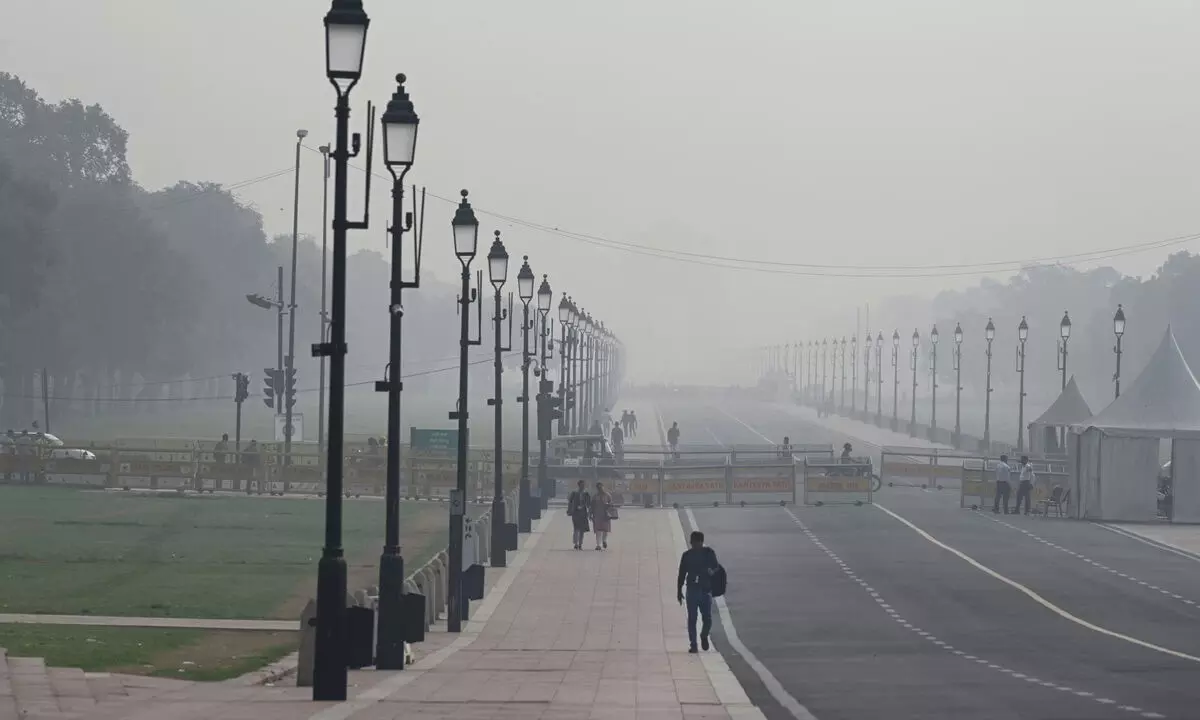Live
- NASA performs investigation on grounded Ingenuity Helicopter on Mars
- MLA Veerlapalli flags off ambulance service
- RMP operates from govt clinic premises
- Vijaya Chaitanya Palanki Quadruples A/B Testing Speed, Boosting ROI
- Expert Insights from Krishna Mohan Pitchikala on Metrics for Software Performance
- 15 Years of Transformation: Oakridge International School, Bachupally Celebrates Founder's Day
- Takshasila celebrates annual day
- Three killed in Israeli airstrike on Lebanese town
- 3 months after opening, Morampudi Flyover remains incomplete
- Skill enhancement session organised for school teachers
Just In
Delhi Chokes On Post-Diwali Smog As Supreme Court Ban Ignored, AQI Reaches Hazardous Levels


Delhi Chokes on Post-Diwali Smog as Supreme Court Ban Ignored, AQI Reaches Hazardous Levelsefforts, the annual air quality crisis in the National Capital Region intensifies, emphasizing the critical need for sustainable solutions.
Delhi Chokes on Post-Diwali Smog as Supreme Court Ban Ignored, AQI Reaches Hazardous Levelsefforts, the annual air quality crisis in the National Capital Region intensifies, emphasizing the critical need for sustainable solutions.
A dense and harmful smog engulfed Delhi, Noida, Gurugram, and surrounding areas on Monday morning, a consequence of the populace ignoring the Supreme Court's ban on fireworks during Diwali. This blatant violation led to severe pollution across the National Capital Region, exacerbating the already compromised air quality.
Despite a temporary improvement in air quality on Diwali day, with Delhi experiencing the best air conditions in eight years, the situation rapidly deteriorated. The Supreme Court had explicitly stated that its ban on certain chemicals in fireworks applied not just to the NCR but to the entire country.
Visuals from Delhi depicted roads veiled in thick haze, drastically reducing visibility to a few hundred meters. As the Air Quality Index (AQI) worsened, residents in Noida took to wearing masks to shield themselves from the escalating pollution.
The Central Pollution Control Board (CPCB) reported alarming AQI levels, especially in Anand Vihar and RK Puram, with PM2.5 levels far exceeding World Health Organization limits. At 5:30 am, Delhi's air quality reached a hazardous level of 514, making it the most polluted city globally, according to Swiss group IQAir.
Delhi's Anand Vihar recorded the highest pollution level at 969 (hazardous), prompting the closure of primary schools and restrictions on truck entry. Noida registered an AQI of 269 (poor), while Gurugram recorded 329 (very poor) with PM2.5 levels nearing 500.
Despite the Arvind Kejriwal-led AAP government imposing a complete ban on firecrackers, people in the NCR were observed igniting fireworks, though the intensity was reportedly lower than the previous year. The prolonged toxicity in air quality post-Diwali is anticipated to persist, posing significant challenges for the city's residents.
In response to the escalating pollution, the Delhi government contemplated the idea of 'artificial rain' to mitigate the foul air, but unexpected rainfall provided a temporary reprieve.
The 24-hour average AQI leading up to Diwali was the lowest in eight years at 220, but it surged to 437 on the day. Historical data from the CPCB illustrates a recurring pattern of escalating pollution levels in Delhi over the years, emphasizing the urgent need for sustained efforts to address the city's air quality crisis.

© 2024 Hyderabad Media House Limited/The Hans India. All rights reserved. Powered by hocalwire.com






